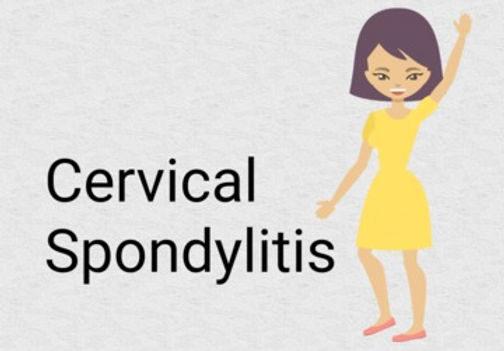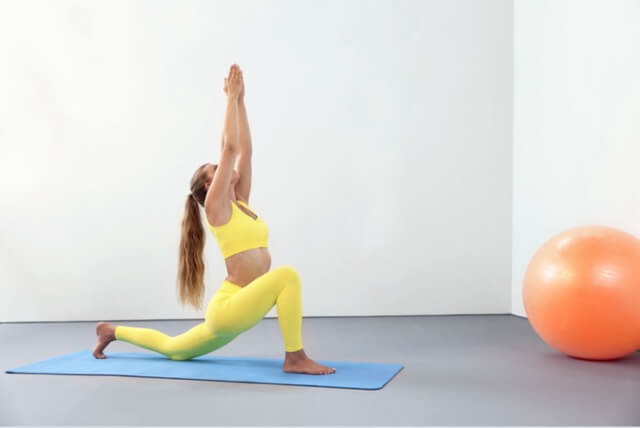Author: Randeep Singh / go to all articles on Yoga cure
Yoga for cervical pain:
Cervical spine is the upper 7 vertebrae of the vertebral column, and cervical spondylosis is the condition
where in the natural process of degeneration, with age, produces certain deformities in the spine causing discomfort in certain cases. Yoga for cervical pain works out these vertebrae in a way to restore their natural health.
The structure of spinal column like other parts of the body is a marvel of the nature. The design and construct of the spinal column are meant to provide flexibility and protection to the vertebral column, and to the spinal cord which runs through the central canal formed by joining together of the hollow space between individual vertebra. The vertebral column is held together by a web of criss crossing ligaments, muscles, and the tendons which provide stability, and flexibility to it.
Spinal nerves emerge out of every vertebra through the spaces available between them and radiate to different parts of the body as electrical cables which carry electrical impulses as signals from, and to the brain. Since the spinal column has to bear the stress and strain of the body weight and the movements of its different parts natures has provided circular shaped liquid filled shock absorbers in between the vertebrae.
These circular shaped pulpy structures are known as spinal discs, or vertebral discs. The health and shock absorbing capacity of each disc is directly proportional to the amount of liquid present in its core. With age and sometimes due to other factors the discs go dry of this cushioning liquid, a dry disc becomes thin and loses it purpose or function.
Loss of muscle mass is natural with age, when this loss occurs around the spinal cord the body compensates by producing extra bone mass out of the vertebrae which are known as bone spurs.
Cervical spondylosis is the name given to the condition when this age related degenerative changes affect the cervical segment of the spine. In general people above 60 years of age experience these degenerative changes. Cervical spondylitis causes pain and stiffness in the neck.
The pain generally increases by bending the neck in a particular direction, because the degeneration is more on the side the neck is bent to. The neck pain generally subsides with resting or relaxation. The pain is caused when the disc has become thing and in the absence of the cushioning between them the edges of the adjacent vertebrae rub on each other. Sometimes the bone spurs will pinch on the spinal nerves causing irritation in them.
The facet joints, the point of contact between two vertebrae, begin to degenerate which causes arthritis of the spine. Presence of a slipped disc in the cervical region of the spine may also cause neck pain if the protruding part of the disc is pressing upon the nearby nerve.
Presence of family history of cervical spondylosis, smoking habit, occupations in which the neck is required to remain extended in one direction, anxiety, or depression can enhances the chances of developing cervical spondylitis in oneself.
The person afflicted with it may feel headaches due to the tension in the muscles of the neck, the patient of cervical spondylitis develop the habit of keeping the head in a particular direction from the fear of getting a painful spasm due to a herniated disc or bone spur pressing on the spinal nerve. Numbness or weakness in the arms or legs may be experienced due to the development of stenosis of the vertebral column.

Stenosis is the condition where the spaces between the vertebrae reduce due to growth of the bone mass causing compression on the spinal cord as well as the spinal nerves weaving through these spaces. Sometimes the person may experience difficulty in walking due to the affected sense of balance.
Cervical Pain Relief
Though the degeneration caused by the natural process of ageing cannot be reversed, still the afflicted can lead a completely asymptomatic life. The yoga for survical problem is meant to reduce the discomfort and symptoms of cervical spondylitis than to cure it.
Simple yoga for cervical spondylosis or neck exercises where the neck is bent slowly in all directions along with rotating the head over the spine in full circles releases the stiffness in the muscles of the neck. Cervical exercises like lifting the hips and the chest to the level where the chin gets locked in the chest while one lies flat on one’s back stretches the muscles of the neck toward the torso. This also increases the circulation of the blood in the neck region adding to the overall health and comfort of the area.
The degeneration caused by age can be kept to the minimum by being aware of the correct position of the head over the shoulders while one stands, sits or bends in any direction. A lot of neck pain exercises stretch, and relax the muscles of the shoulders and the upper back, the tension in these regions is directly related to the stiffness and pain in the neck.
Inversion yoga asanas where the body is inverted over its head with the weight of the body rests on the arms and the head hangs free between the arms by its own weight help stretch the cervical spine in the upward direction, this creates space between the cervical vertebrae releasing any discomfort causing compression between them. The stretching of the muscles around the cervical spine increases the blood supply to the vertebrae which can help arrest any further degeneration in them.
General relaxation techniques, and relaxation asanas like Savasana or Nishpandabha are the most effective in alleviating the pain from the spondylitis neck. Yoga for cervical pain exercises must be practiced regularly for keeping the muscles around the cervical spine strong and healthy. The strength in the muscles of the neck is essential to holding the neck over the head in the right posture.
Asanas for Neck Pain
Other Informative Articles….

